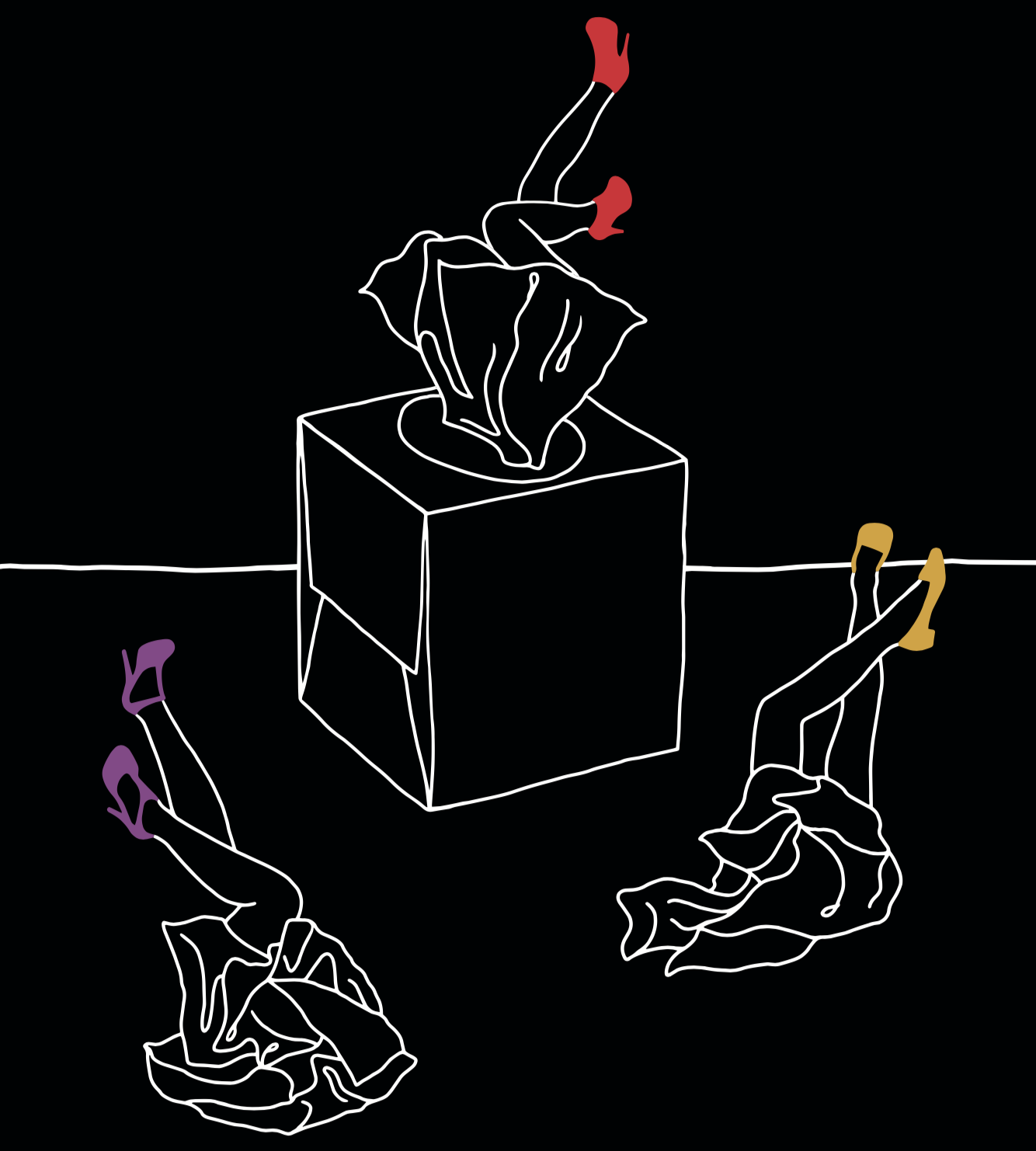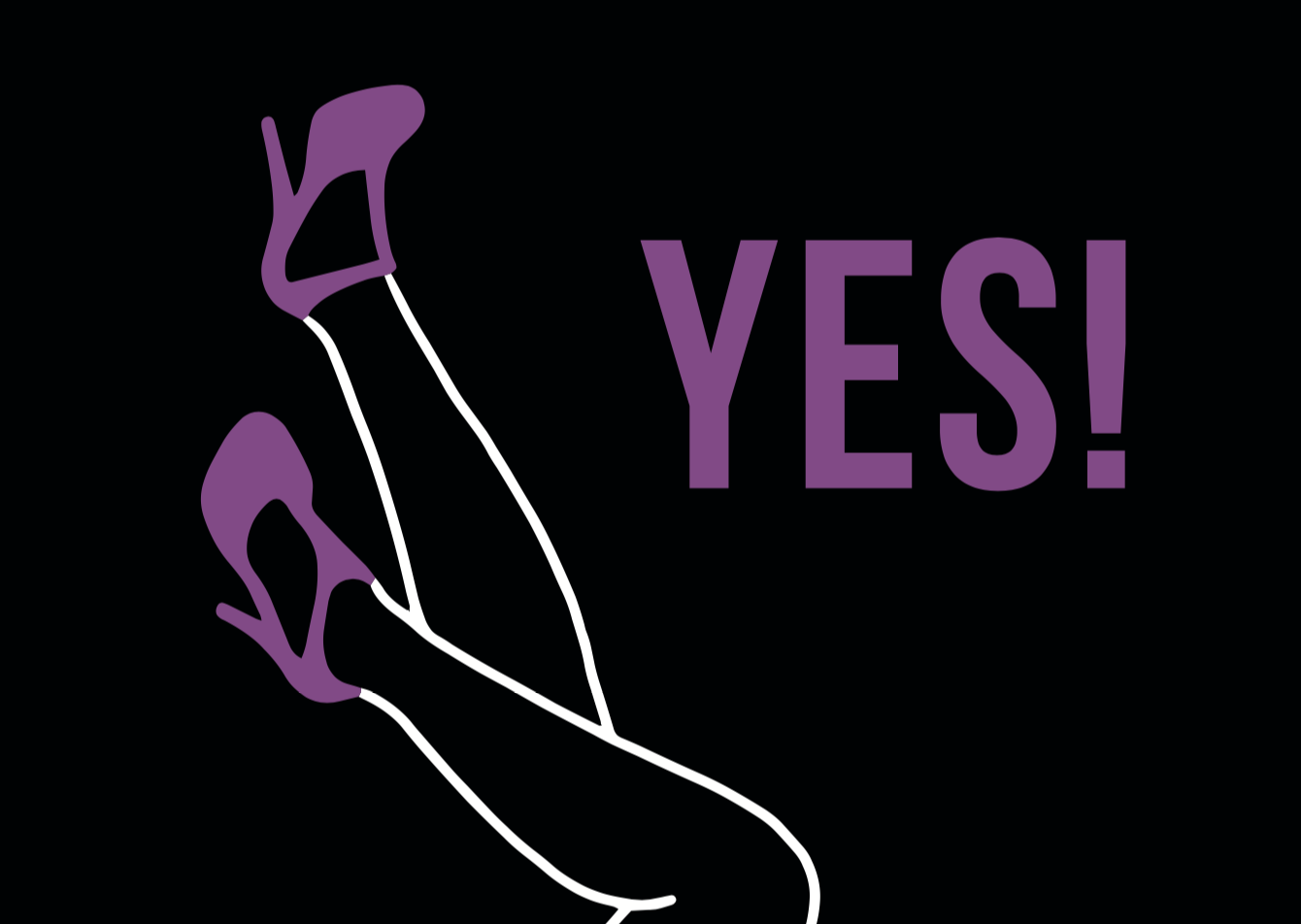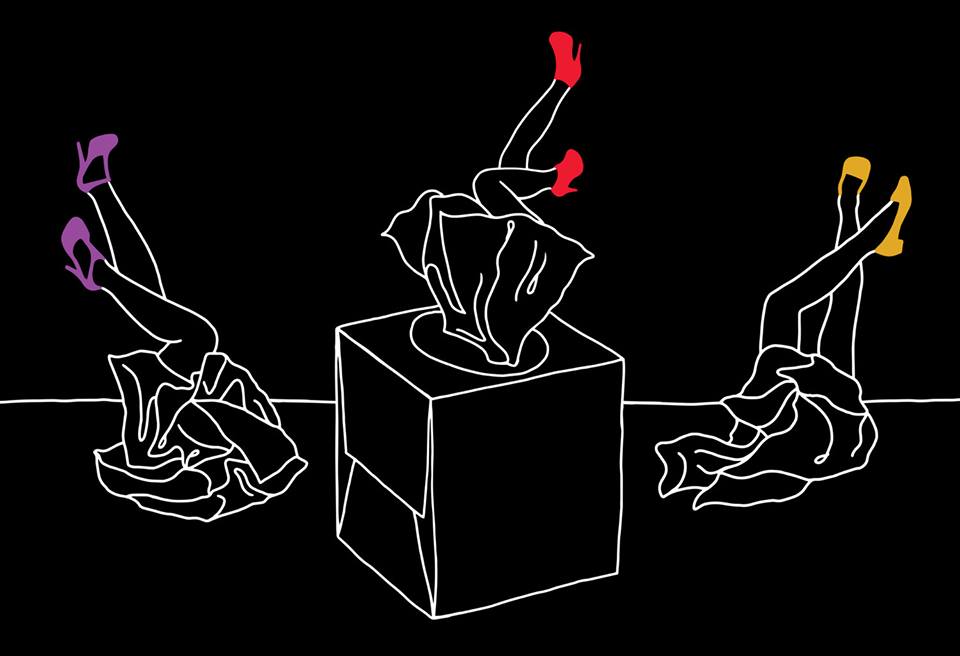Written by Caitlin Hartney
Illustration by Casey Kelly
For the fully stylized version of this article with additional illustrations, pick up a free physical copy of No Boundaries issue 5 anywhere in Buffalo or Rochester or review it here on issuu.
Do you remember the moment you realized that the sexual revolution and the liberation it long purported to offer women is (and always has been) a fallacy?
Granted, you probably didn’t think about it in those terms. But if you are a cis, heterosexual woman, I suspect you have, at some point pre-, mid-, or post-hookup, thought, “What in the literal fuck am I doing?” Not because you felt guilty about your sexuality, but because it dawned on you that too many of the men you’ve slept with couldn’t see far enough past their own pleasure to give your personhood a moment’s regard.
If that rings true for you, then you have felt the effects of a sexual revolution decidedly shaped by the forces of normative manly culture to the detriment of women.
Sure, it granted women the “right” to have lots of sex and not feel guilty about it, but in denying us the space and voice to not want sex, to not have sex, or to disallow bad sex from our lives, the sexual revolution ultimately failexd us as a gender.
I’m not sure when the realization first hit me. Maybe it was the encounter I begrudgingly consented to, in part because it seemed like the thing to do and in part because I didn’t know how to back out, only to have it unfurl with me unceremoniously bent over by a man who responded to my winces and cry of pain with laughter, extra vigorous thrusting, and a cutting insult for good measure.
For you, it may have been a sexual partner who presented as a friend but ultimately demonstrated to the contrary—someone who engaged you physically and emotionally in your presence but called you crazy or otherwise ridiculed you behind your back. Or maybe you were there for him, and he seemed there for you, but only insofar as the terms of that arrangement served his needs and didn’t ask him to extend himself to tend to yours.
For Margot, the protagonist in Kristen Roupenian’s viral New Yorker short story “Cat Person,” about the power struggles of a first date gone wrong, the realization likely came when she succumbed to the sex that had begun to repulse her:
She felt a wave of revulsion that she thought might actually break through her sense of pinned stasis. But then he shoved his finger in her again, not at all gently this time, and she imagined herself from above, naked and spread-eagled … and her revulsion turned to self-disgust and a humiliation that was a kind of perverse cousin to arousal.
In the immediate aftermath of their copulation, Margot thought, “This is the worst life decision I have ever made! And she marveled at herself for a while, at the mystery of this person who’d just done this bizarre, inexplicable thing.”
Sex Gone Bad
These scenarios are the stuff of bad sex—the byproduct of one or more parties’ oblivion to, dismissal of, or contempt for the other’s wants and needs.
Bad sex can be physical or emotional and manipulative or unintentional, and it is common to casual sex. But to admit it’s common is not to say it’s harmless.
It is degrading and demoralizing and emblematic of an unhealthy culture in which far more egregious sex acts are given environment to thrive. And yet, despite the harm, we keep going back for more, thanks, I suppose, to some misguided, Carrie Bradshaw-shaped belief that casual sex is glamorous and empowering. Certainly, it can be—but not the way many of us practice it.
Bad sex harms women in big and small ways that accumulate and reverberate. If you add up all of the bad sex of all the women, the emotional injury is epidemic, to say nothing of the retrauma it might inflict on survivors of emotional and physical abuse and sexual assault (which is many of us). In turn, it wastes women’s precious time and emotional and mental energies—resources that could be better expended on ourselves and other things that matter. And suddenly, female rage has an additional layer of complexity.
For generations, much of that rage has been directed inward, feeding women’s insecurities and anxieties. It’s only when the #metoo movement evolved to encompass bad sex rage and redirect it at men that people took notice—and issue. One reason media interventions like “Cat Person” and Babe.net’s accusations against actor Aziz Ansari sparked intense interest and debate is because they portray circumstances that are uncomfortably familiar to huge swaths of the population. No one wants to look their own behavior in the eye or admit they might be part of the problem.
Rather than sit with the discomfort, up-in-arms critics have dismissed bad sex rage, accusing it of transforming “a movement for women’s empowerment into an emblem for female helplessness” and trivializing the work being done to combat rape and harassment.
Bad sex is not the same as criminal sex, and measures should be taken to separate the two and protect its parties from public incrimination. That much critics have right. But to be surprised by it and to call it anti-feminist is shortsighted. Since the 60s and 70s, feminists have wielded the wounds of bad sex to express legitimate anger at a sexual revolution that delivered “liberation” for women squarely on men’s terms.
A Revolution Unfinished
By 1965, the sexual revolution was underway. Spearheaded by youth and made possible by the Pill, it normalized sex outside of marriage, so that by the 1980s, casual sex was all but a given. But in dismantling a sexual economy predicated on monogamy and procreation, we failed as a society to replace it with an alternative set of universally-serving rules.
In that void, old bondages were replaced by new opportunities for exploitation.
Then, as ever, men were in a privileged position to make the rules, and they made out like bandits as pools of women entered the hookup market.
Women’s liberation was less complete. In softening the stigma around pre- and extra-marital sex and dissolving the social relevance of committed, monogamous relationships, the sexual revolution deprived many women of what has previously been their sole bargaining chip. In her epic chronicle of the women’s movement, historian Ruth Rosen writes, “Suddenly, peer pressure to say yes replaced the old obligation to say no, threatening to eliminate a young woman’s veto.”

Women were also not as easily unshackled as men from social pressure to marry, or—at the very least—find a boyfriend. Popular culture continued to pummel women with the message that having a man was paramount and that single women should bend to men’s needs and proclivities to stay competitive in a marketplace where physical intimacy was casually traded. Helen Gurley Brown’s 1962 pseudo-liberating best-seller Sex and the Single Girl advised women to “spruce up their minds,” become financially independent, and to have sex before marriage, but its operating thesis was to do it all in the name of landing a relationship. Winning over a man was still the end-game.
Three years after the book’s publication, Gurley Brown was named editor of Cosmopolitan, and until her retirement in 1997, she filled the magazine with her husband-landing philosophies, putting emphasis on dieting one’s way to desirability and committing to memory an untold number of “Ways to Pleasure Your Man.” Shortly after Gurley Brown’s appointment, feminist Betty Friedan lamented the magazine’s failures to encourage women to live a broader life:
“It is the idea that woman is nothing but a sex object, that she is nothing without a man, that there is nothing in life but bed, bed, bed.”
The Personal Is Political
Still other women embraced the nonchalant sexual attitudes of men because it was fun! At least at first.
In 1973, writer and leftist activist Karen Lindsey wondered where “the great dream of beautiful, healthy, unfettered sex [had] gone wrong,” writing in the Boston Phoenix, “I’m not sure when the sexual revolution began to hurt.”
Lindsey had spent the previous decade running with Students for a Democratic Society (SDS), a major New Left organization in the Civil Rights movement and a microcosm of the sexual revolution’s tensions:
Men were my friends, and sex was part of our friendship they assured me…But once or twice, I found myself in situations where I wasn’t up for a good time—where I…needed the kind of warmth and reassurance that didn’t end up in fucking. And my good friends, the lovers, weren’t there or were there with such undisguised disdain for my needs that…I began to realize that, far from being an integrated part of a relationship, my sexuality existed for these men solely as a function of their pleasure or fantasy.
Despite its liberal politics, SDS was a boy’s club rampant with misogyny. Women were expected to put out, and their position in the organization was a function of who they had slept with—their talents a far second to their desirability. As the power went to men’s heads, their mistreatment of women did, too.
“In such a sexually charged atmosphere, some women began to feel like Kleenex rather than cherished lovers,” Rosen writes.
“This, above all, explains the splenetic rage that women directed against their movement ‘brothers.’”
In time, Lindsey’s disillusionment caused her to take stock of her willingness to participate in a culture that caused her so much distress: “I had been pushing myself into being ‘free’—into sleeping with men I didn’t give a damn about and sometimes wasn’t even attracted to because I had gotten dependent on the notion of sex as fulfillment…”
After a year of self-imposed celibacy, Lindsey drew the conclusion that the sexual revolution “was based on a myth,” doubting that healthy sex could ever be “a simple animal act” unencumbered by consideration of each other’s complexities:
“Human beings have other than physical needs, and I wonder if the most desolating trip that male culture has laid on all of us isn’t its attempt to rigidly divide the areas…”
In his memoir, SDS leader Tom Hayden reflected on the same cultural moment:
“Women could freely take multiple boyfriends, but not as freely escape their image as passive objects. For male students like myself, the new climate simply meant that more women were openly ‘available.’ But it told us nothing about the souls and needs of those women.”
Then as Now
Millennials like myself grew up constrained by the terms and tensions the sexual revolution set in place five decades ago. The result is a generation rife with sex-positive women who not only equate sex with fulfillment but also disassociate the totality of our needs from casual intercourse just to stay in the game.
We’ve had to fuck like men to be fucked by men.
Now, some of us are starting to realize that we don’t have to accept bad sex as part and parcel to that game. Like the second-wave feminists who extolled the injuries of the sexual revolution in its salad days, we are speaking out about our wounds. Only this time, we have the amplification powers of social media on our side.
Maybe it’s no wonder, then, that millennials are having markedly less sex, in terms of frequency and number of partners, than generation X and baby boomers. It’s a phenomenon The Atlantic dubbed “The Sex Recession,” and at least one researcher, Debby Herbenick of Indiana University, attributes it to a “healthy reaction to bad sex.” She suggests people might finally be feeling empowered to say, “No, thanks” to sex that doesn’t serve them.

Coming Full Circle
If millennials are amplifying the wounds of bad sex and saying no to it in their lives, there is evidence that the next generation is taking measures to rectify it.
On college campuses, a charged gen Z movement is advocating for more equitable dynamics in the bedroom, starting with a redefinition of consent from “no means no” to “yes—verbally and enthusiastically and continuously reaffirmed—means yes.”
That may sound unromantic or impractical to older folks accustomed to a certain coyness and reticence around casual sex. But our uncommunicative tendencies aren’t doing us any favors. If there is one thing to be learned by circulating accounts of bad sex, it’s that we have no idea how to talk to each other about what it is we want and are willing to give.
A shift in our cultural mindset is in order. By demanding new clarities around sex and normalizing open and frank conversations between sex partners, gen Z is doing more to give women a say in the terms of casual sex than any previous generation. In doing so, might just be the first to carry out the work of the original sexual revolution, which for five decades has gone injuriously unfinished. [ – ]






